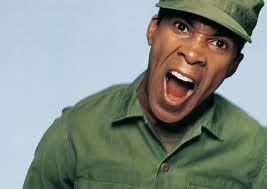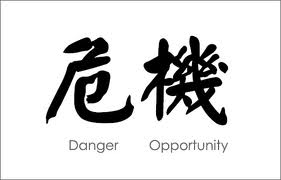 As many of you know, I opened my non-profit consulting practice a few weeks ago after Labor Day. It was a “soft open,” which means I am actively pursuing and accepting work, but I’m still frantically developing business infrastructure like my website, menu of services, etc. In fact, I am running out the door in just a few minutes to meet with my marketing friends at Marketplace Media Group.
As many of you know, I opened my non-profit consulting practice a few weeks ago after Labor Day. It was a “soft open,” which means I am actively pursuing and accepting work, but I’m still frantically developing business infrastructure like my website, menu of services, etc. In fact, I am running out the door in just a few minutes to meet with my marketing friends at Marketplace Media Group.
Part of the “opening the doors” process has been identifying services and trying to price them according to what the marketplace of non-profit organizations allegedly demands. One of the services I plan to offer is something I’m naming “Annual Campaign Boot Camp“.
I got this idea from my personal trainer, Kathy Bruno, who runs a weekly “Fit Camp Challenge” at The Centre, which is my gym in Elgin, IL. In this program, Kathy is a coach and consultant focused on teaching participants best practices around exercise and diet. She is the accountability queen, and I think she enjoys beating the living life out of me every Wednesday.
So, it was a few weeks ago as I slugged around the track I started thinking: “Hey, I wonder if non-profit leaders and resource development professions would participant in a similar program focused around annual campaign planning and implementation? And if so, what would it look like?”
Every since that epiphany, I’ve had this scene from Stripes playing over and over in my head as I trudge around the track. Click this link if you want to enjoy a trip down memory lane with Bill Murray.
However, my challenge is that I need to add some flesh to the bones of this concept, and I would like some help from YOU (which means I am asking all of you shy subscribers to this blog to please take a moment to write a comment or drop me a note via email or social media . . . PLEASE . . . I really do need your help)
Here are some of the random (and incomplete) ideas and questions rolling around my head:
- Bi-weekly coaching sessions by phone with participants (resource development staff only or campaign chairperson included?)
- Just coaching or are there some online “trainings” also offered?
- Is there a benchmarking component to the program for post-campaign comparative purposes?
- Is there a “group component” to this program? For example, should there be opportunities for all organizations that sign-up to periodically assemble in the same online chatroom (or Tweet-up) to discuss challenges and learn from each other (and collectively share solutions with each other)? If so, how often?
I normally use my blog bully pulpit to talk about your challenges and provide subscribers with my expertise and advice. Today, I’m turning the tables and asking for your expertise and advice. PLEASE take one minute out of your day and help me with some of these questions.
Any comments and feedback would be very much appreciated! What else do you think should be included in this Boot Camp product? What issues do you have with your organization’s annual campaign that you think could be helped with a service like this? What price do you think organizations your size might be willing to pay for this service?
I normally end my blog posts by saying “We can learn from each other” . . . however, today I’m going to emphasize that “I can learn from you.” I look forward to your input and appreciate your time. Thank you!!!
Here is to your health!
Erik Anderson Owner, The Healthy Non-Profit LLC eanderson847@gmail.com http://twitter.com/#!/eanderson847 http://www.facebook.com/eanderson847 http://www.linkedin.com/in/erikanderson847








